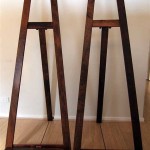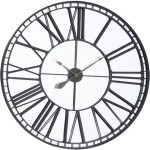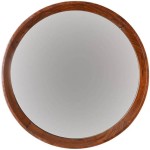How To Adjust Screen Mirroring Size on iPad
Screen mirroring, the ability to wirelessly project an iPad's display onto a larger screen like a TV or projector, is a powerful tool for presentations, entertainment, and collaboration. However, sometimes the mirrored image doesn't perfectly fit the receiving display, leading to black bars or a cropped image. This article explores various methods for adjusting the screen mirroring size on an iPad to achieve an optimal viewing experience.
Understanding Aspect Ratios and Resolutions
Before delving into adjustment methods, understanding the underlying concepts of aspect ratios and resolutions is crucial. An aspect ratio represents the proportional relationship between the width and height of a display. Common aspect ratios include 4:3, 16:9, and 16:10. Resolution refers to the number of pixels that make up the display, expressed as width x height (e.g., 1920 x 1080). Mismatches between the iPad's aspect ratio and resolution and that of the receiving display are the primary cause of sizing issues during screen mirroring.
Adjusting Output Settings on the Receiving Device
Often, the simplest solution lies in adjusting the settings on the receiving device (TV or projector). Most modern TVs and projectors offer various picture modes or aspect ratio settings. These settings might include options like "Fit to Screen," "Zoom," "Stretch," or "Wide." Experimenting with these settings can often resolve sizing discrepancies. Consult the user manual of the receiving device for specific instructions on adjusting these settings.
Utilizing the iPad's Zoom Feature
The iPad's built-in zoom feature can also be used to adjust the mirrored image size. While primarily designed for accessibility, this feature can indirectly affect the mirrored output. Accessing the Zoom feature through the iPad's Settings app (Accessibility > Zoom) allows users to magnify the entire screen. This can be useful for filling the receiving display if the mirrored image is too small. However, it's important to note that zooming may reduce the overall sharpness of the mirrored image.
Leveraging Apple TV's Settings (If Applicable)
When mirroring to an Apple TV, the Apple TV itself offers some control over the mirrored image size. Within the Apple TV's settings, users can adjust the resolution and overscan settings. Overscan, a legacy feature, can sometimes cause the edges of the mirrored image to be cut off. Disabling overscan or adjusting its settings might resolve cropping issues. Navigating to Settings > Audio & Video > Resolution or Settings > Audio & Video > Adjust for AirPlay Overscan on the Apple TV provides access to these settings.
Considering Third-Party Apps
While less common, certain third-party screen mirroring apps available on the App Store may offer additional sizing controls. These apps might provide features such as custom aspect ratio settings or scaling options not found in the standard AirPlay functionality. Exploring these apps could be beneficial if the built-in methods prove insufficient.
Checking for Software Updates
Outdated software on either the iPad or the receiving device can sometimes contribute to screen mirroring issues. Ensuring both devices are running the latest software versions can resolve compatibility problems and improve the overall mirroring experience. Software updates often include bug fixes and performance enhancements that can address sizing inconsistencies.
Restarting Devices
A simple restart of both the iPad and the receiving device can often resolve temporary glitches that might be affecting the screen mirroring size. This basic troubleshooting step can clear cached data and reset system processes, potentially resolving the issue without further intervention.
Verifying Hardware Compatibility
In rare cases, hardware limitations might prevent achieving a perfect fit. Older TVs or projectors may not support the iPad's native resolution or aspect ratio, leading to unavoidable scaling issues. Consulting the technical specifications of both devices can help determine potential compatibility limitations.
Addressing Network Connectivity
A weak or unstable Wi-Fi connection can also impact screen mirroring performance, sometimes manifesting as sizing anomalies or distorted images. Ensuring a strong and stable network connection between the iPad and the receiving device is essential for optimal mirroring quality.
By systematically exploring these methods, users can effectively adjust the screen mirroring size on their iPad and achieve a seamless viewing experience on a larger display. Understanding the interplay between aspect ratios, resolutions, and device settings empowers users to troubleshoot and optimize their screen mirroring setup.

3 Ways Of Ipad Screen Mirroring Pro Air Mini Supported

How To Change Ipad Fullscreen In Tv With Apple Airplay

Everything You Need To Know About Screen Mirroring Iphone And Ipad Reflector

How To Make My Iphone Mirror Full Screen On Tv

How To Use Your Ipad As A Secondary Display For Mac

How To Screen Mirror Ipad With Ipados 16

How To Make Screen Mirroring Full Easily Solved

Use Airplay To Stream Or Mirror The Screen Of Your Ipad Apple Support
.png?strip=all)
Everything You Need To Know About Screen Mirroring Iphone And Ipad Reflector

Everything You Need To Know About Screen Mirroring Iphone And Ipad Reflector








